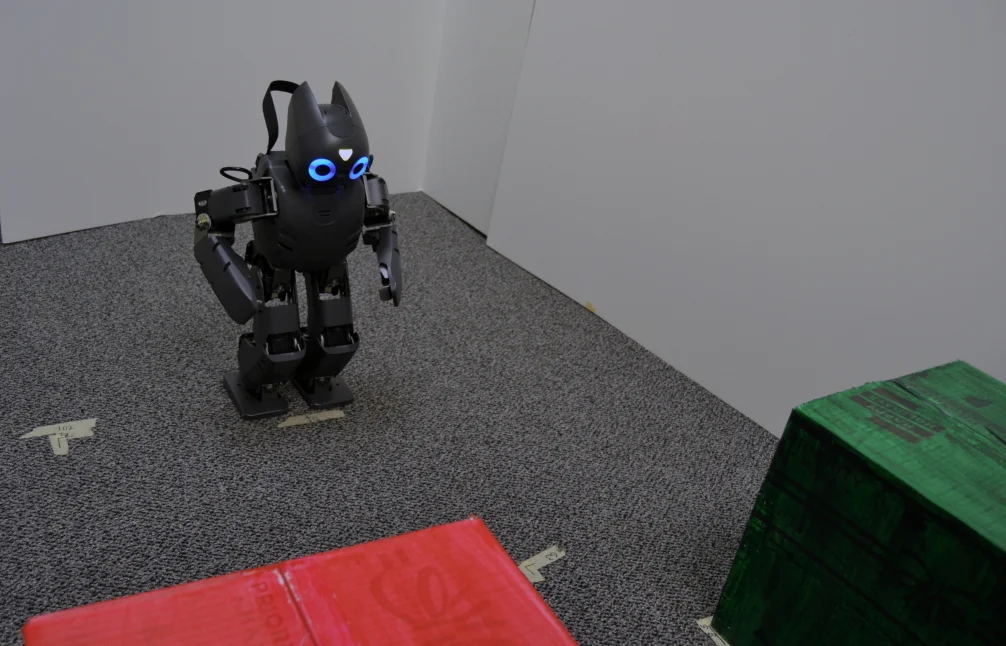Overview
Brain-computer interfaces (BCIs) use recorded brain signals to bypass the musculoskeletal system by directly controlling a computer. In a collaboration with the CONQUER CollabOrative we are developing a BCI to control a miniature robot, the DARwIn-OP.
We are looking at changes in blood flow in different areas of the motor cortex during hand and foot motor imagery (imagined movements). The imagined movements are mapped to high-level navigation control for a robot and used to navigate a small room towards a goal area. Future applications of this project could be control of tele-presence or assistive robots as well as prosthetic limbs.
Publications
A. M. Batula, Y. E. Kim, and H. Ayaz, "Virtual and Actual Humanoid Robot Control with Four-Class Motor-Imagery Based Optical Brain Computer Interface," in BioMed Research International, pp 1-13, 2017.
A. M. Batula, J. A. Mark, Y. E. Kim, and H. Ayaz, “Comparison of Brain Activation During Motor Imagery and Motor Movement Using fNIRS,” in Computational Intelligence and Neuroscience, pp 1-12, 2017.
A. M. Batula, J. Mark, Y. E. Kim, and H. Ayaz, “Developing an optical brain-computer interface for humanoid robot control,” in Lecture Notes in Computer Science (including subseries Lecture Notes in Artificial Intelligence and Lecture Notes in Bioinformatics), vol. 9743, D. D. Schmorrow and M. C. Fidopiastis, Eds. Toronto, Ontario, Canada: Springer International Publishing, 2016, pp. 3–13.
A. M. Batula, H. Ayaz, and Y. E. Kim, “Evaluating a Four-Class Motor-Imagery-Based Optical Brain-Computer Interface,” in Proceedings of the Annual International Conference of the IEEE Engineering in Medicine and Biology Society, 2014, pp. 2000–2003.


